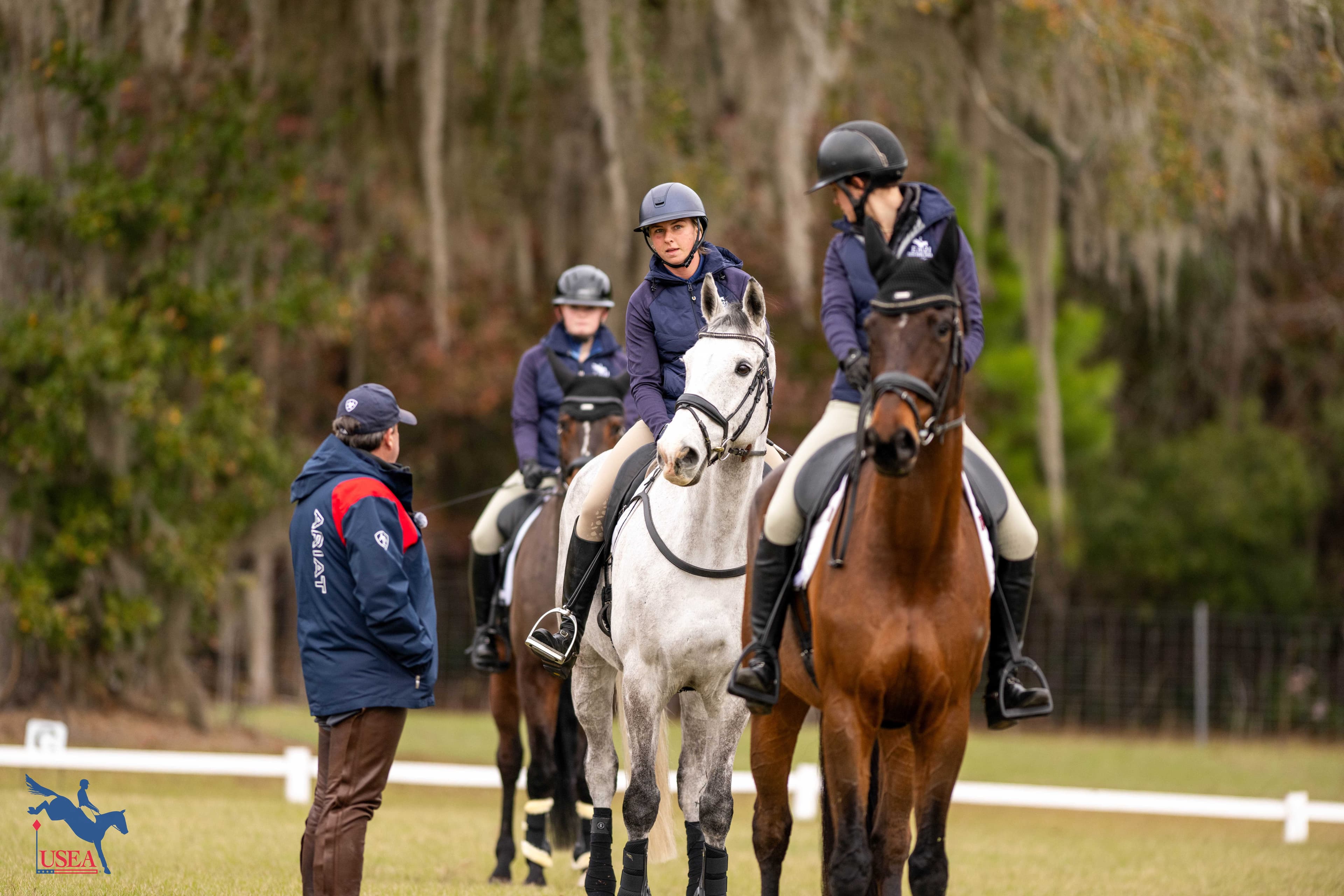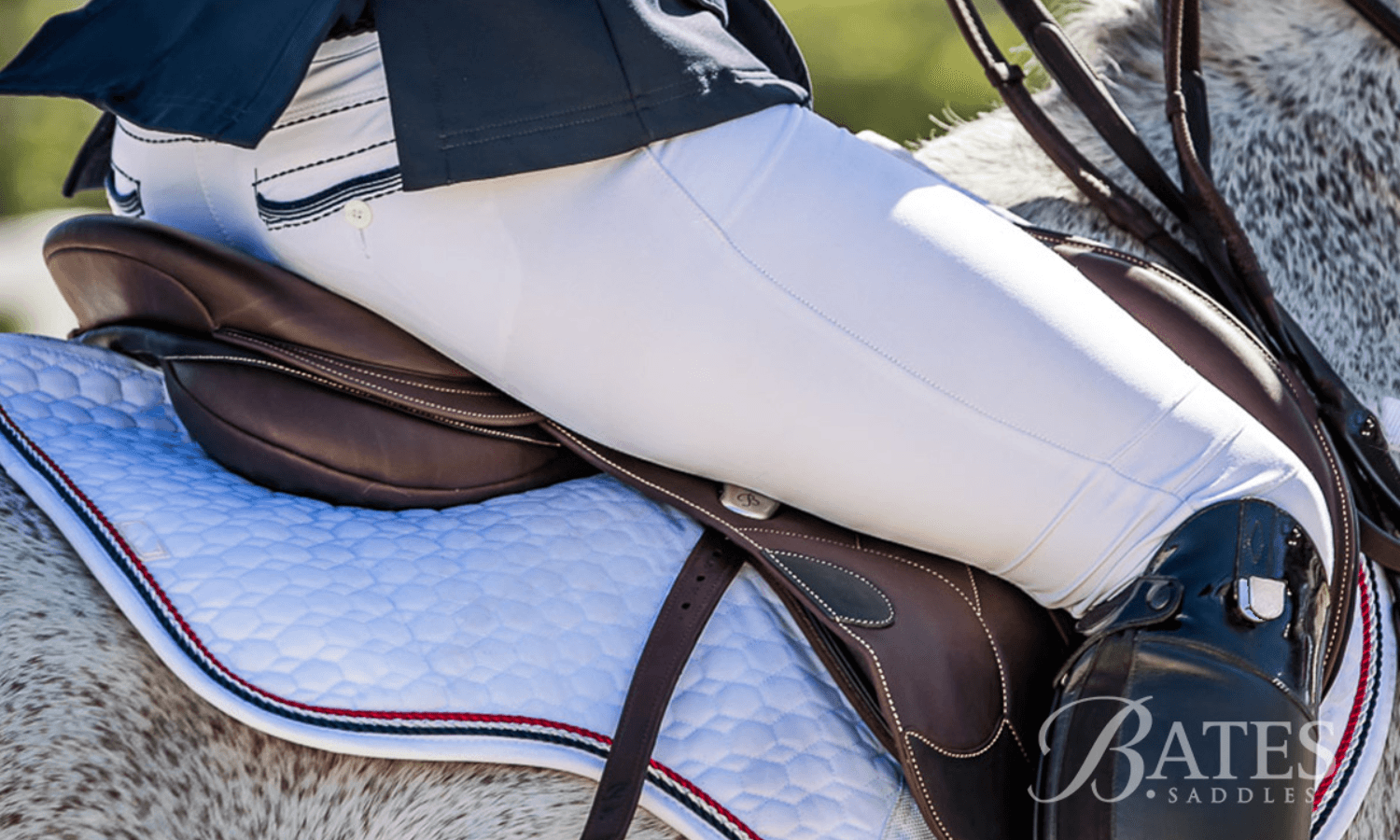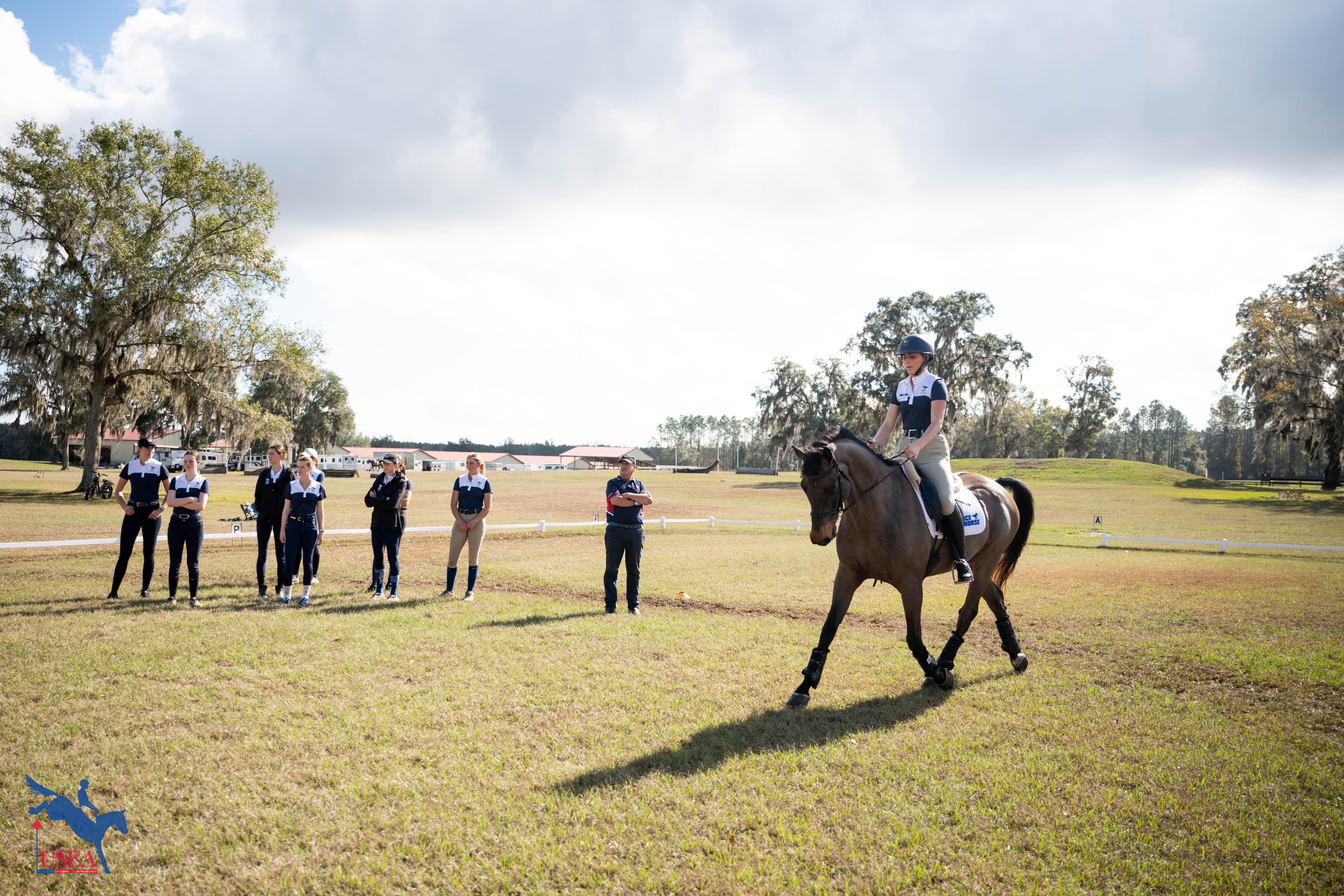A Foundation of Rhythm and Balance is the Focus on Dressage Day at EA21 East I Regional Clinic
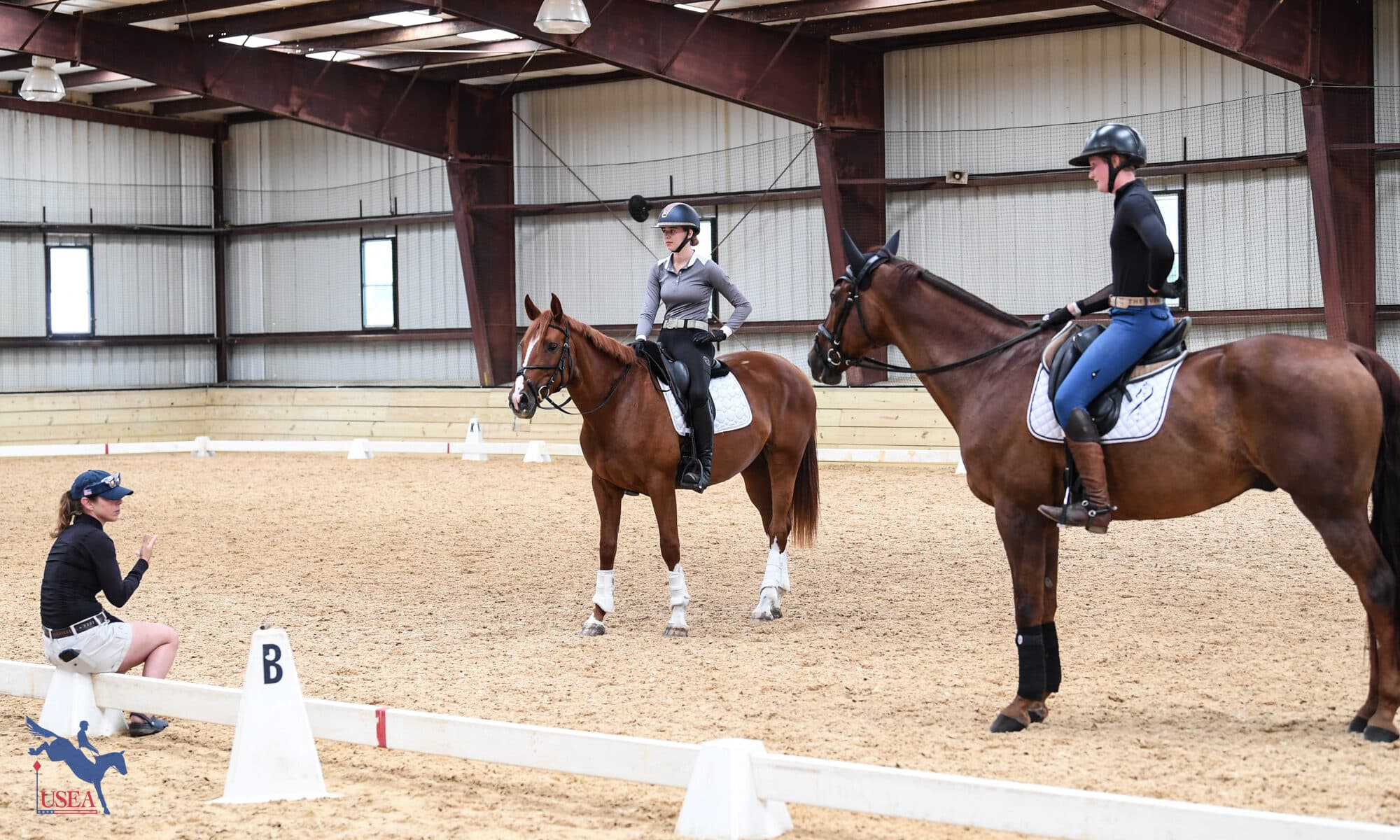
For riders at the USEA Emerging Athlete U21 (EA21) East I Regional Clinic, today’s dressage lessons with Advanced rider and Eventing Coaches Program (ECP) coach Shannon Lilley focused on the training scale as it relates to jumping.
After a lecture on Monday, 12 young riders rode in pairs in front of Lilley in the indoor arena at Morven Park International Equestrian Center in Leesburg, Virginia, on Tuesday.
“Our theme is rhythm and balance and being able to go forward and back and maintain that. The tempo changes, but the rhythm doesn’t change,” said Lilley. “For any jumping, I’m a big believer that the canter’s really important, but they have to know they have to stay true to the rhythm. You might energize them more in the canter and shorten them and do transitions within the canter, but the rhythm has to be pretty steady within six strides out. So, we’ll take the balance and the rhythm they have today to the jumping. They have to understand the use of their seat and how to use their body to create the rhythm and balance because they do it the same on a shorter stirrup in the jumping.”
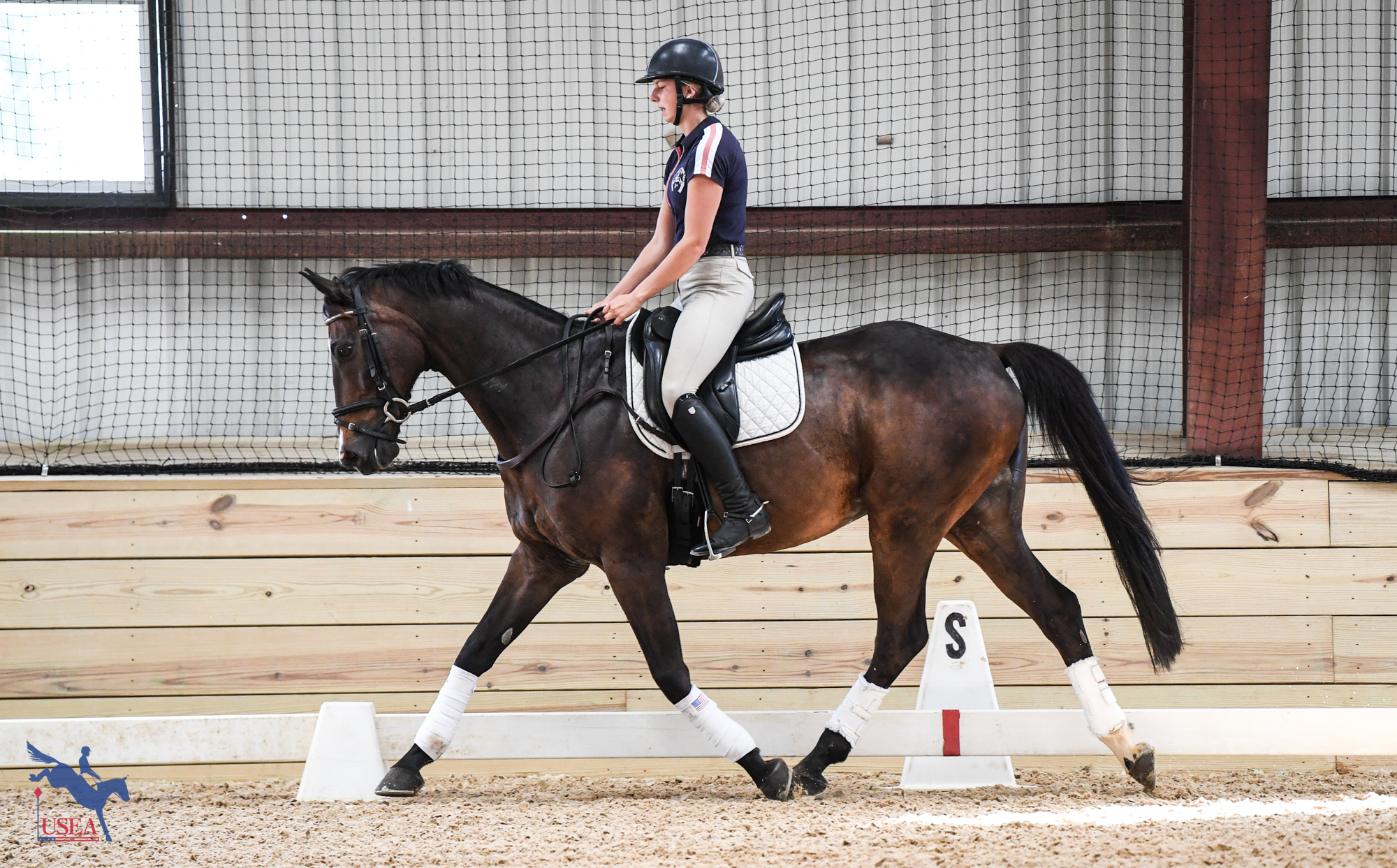
After rhythm comes suppleness, and after explaining their horse’s strengths and weaknesses to Lilley, riders worked through a series of exercises to establish both depending on their and their horse’s skill level. The lessons were less about specific dressage movements, and more about suppling exercises.
“All of this is to help the foundation and to help them understand where it is,” said Lilley. “In everything we do in our sport, it starts with rhythm. It’s a theme throughout all phases.”
The first set of riders, Ayden Schain and Caitlin O’Roark, started with 10-meter circles in the corner to a leg yield in trot, then back to a 10-meter circle in the corner. Then they took the leg yields to the diagonal.
Lilley encouraged both to follow with their elbows so their horses could use their necks to help bring the shoulders forward. “Every now and then, reach towards the withers a little,” she said.
They moved on to leg yielding in canter from the longside to the quarter line, then back, always thinking of riding a little shoulder-fore, which is an important preparation for almost every movement and for coming out of corners in the dressage ring.
For Becca Roth and Annabella Sprague, 8-meter circles in trot helped warm up their horses, who needed to stretch more laterally and bend more.
Then they moved on to a similar exercise that O’Roark and Schain did, leg yielding in canter and counter-canter and changing the positioning of their horses’ head and neck and bend.
“The leg yielding off the outside leg in canter is really a straightening exercise,” explained Lilley. “It’s to be able to put the weight into the outside hind leg, which is the power leg in canter. It’s pushing [the riders] so they’re finding that the horse gets a little more level in the hips, and it helps them to be able to ride the outside hindleg into the connection.

“Oftentimes the canter is a little bit shoulders to the outside, so this puts the shoulders naturally into a shoulder-fore positioning, which is what they do most everything out of,” she continued. “A lot of them did that to create the positioning so they understand the positioning. Then you go from there into shoulder-fore and renver, which is counter flexion in a shoulder-fore or shoulder-in depending on the degree. That creates the balance they need from behind the saddle on their hips as opposed to pulling on the shoulders.”
Haunches-in on a circle in canter and lengthening the canter on a circle and on the longside helped the next pair, Braden Speck and Audrey Ogan, who were on smaller horses.
“I would do more transitions within the gait and not in and out of the gait,” said Lilley. “Leg yield, go big, then go small. Then you get them moving in and out and more up and down. Moving their feet more and more. These horses aren’t as big as the last group, so I wouldn’t do lots of smaller circles.”
The riders were instructed to go forward for 10 strides at a letter, then come back and shorten to make the horses carry themselves a bit more. Lilley wanted them to hold the shorter stride until it was almost a trot. As they kept repeating the exercises, the horses, particularly Speck’s, got quieter and steadier in the connection.
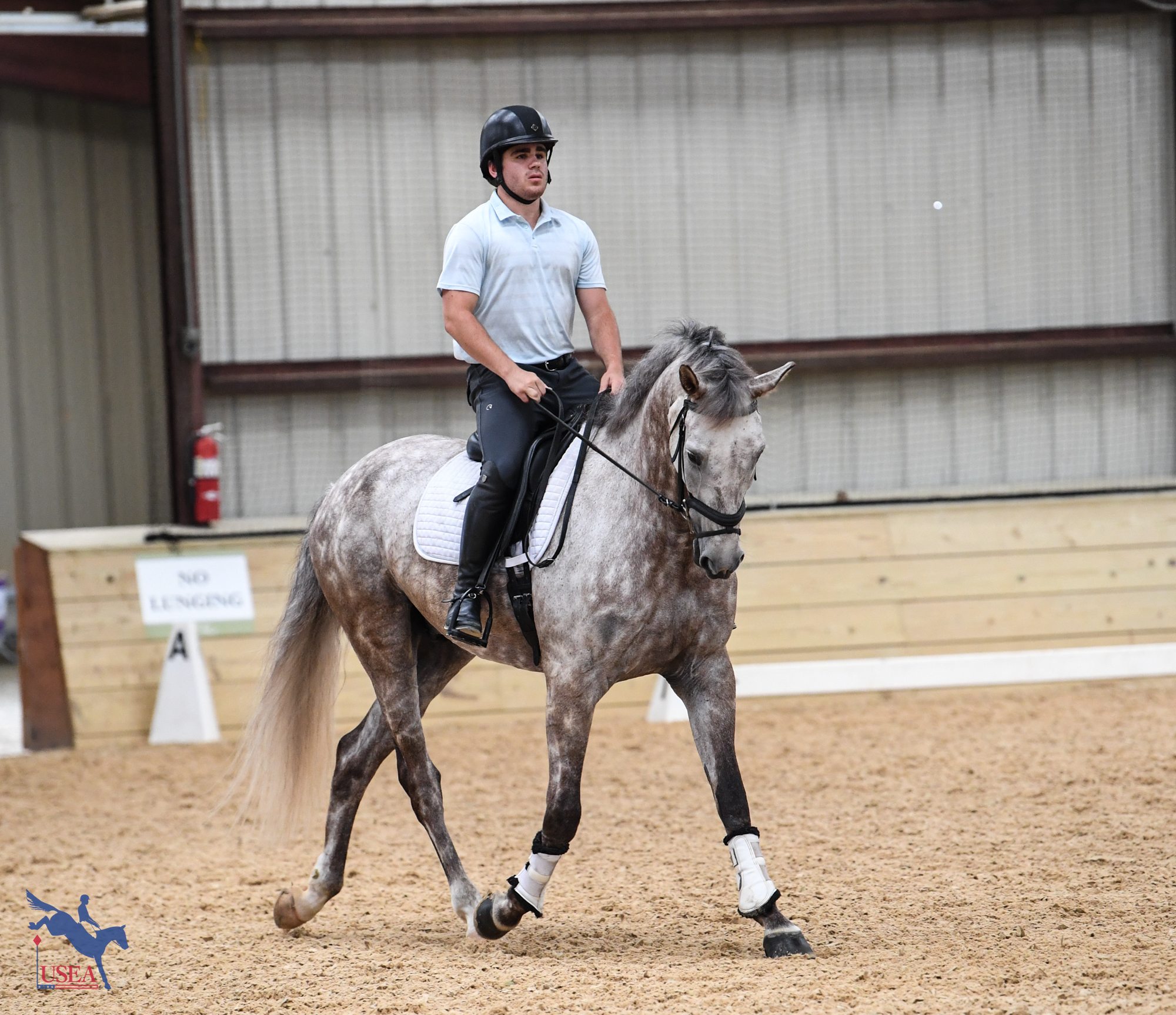
For Samantha Homeyer’s hotter mare, Lilley made sure to have her keep asking for the lengthening and shortening within the gaits—not to get to the point of “boiling over,” but not riding her “like porcelain” either. “It might take more strides to get her back, but that’s OK. You have to make a real difference. It has to feel big and small so they understand,” she said. “Changing the gait helps bring the hind leg under so their balance goes further back. It helps change their frame up more.”
By the end of their lessons, each pair of riders had horses who were more connected, through, adjustable and balanced as they head into the show jumping lessons tomorrow.
“A lot of it was addressing once they got to the point where they were connected, then they could go to those movements to be able to develop a stronger connection through the movements,” said Lilley. “The movement makes it better. It gets them engaged more and builds a stronger connection to their balance so they’re more on their hind legs. A lot of them, their point of balance has to be further back so they’re not down on their shoulders and they start to find their hind legs and move their feet, then you can take it wherever you need to go. Depending on the ability of the horse, some were just leg yielding and some were doing more.”
Don't forget to follow the USEA’s coverage on social media!
Facebook | Instagram | Twitter
About the USEA Emerging Athlete U21 Program (EA21)
The purpose of the USEA Emerging Athletes U21 Program (EA21) is to identify and provide consistent quality instruction to the next generation of elite event riders. The aim is to create a pipeline for potential team riders by identifying and developing young talent, improving horsemanship and riding skills, and training and improving skills and consistency.
The USEA Emerging Athletes U21 Program was launched in 2022 with a model of five summertime regional clinics taught by selected USEA Eventing Coaches Program (ECP) instructors, leading to a winter national camp consisting of selected Young Riders from the regional clinics. Athletes who are 21 years or younger, are current members of their USEA Young Rider Area program, and are established at the Training Level or higher, are eligible to apply for the EA21 program. Click here to learn more about the USEA EA21 Program.
The USEA would like to thank Kerrits, Ride iQ, Sidelines Magazine and WeRideTogether for sponsoring the USEA Emerging Athletes U21 Program.
































